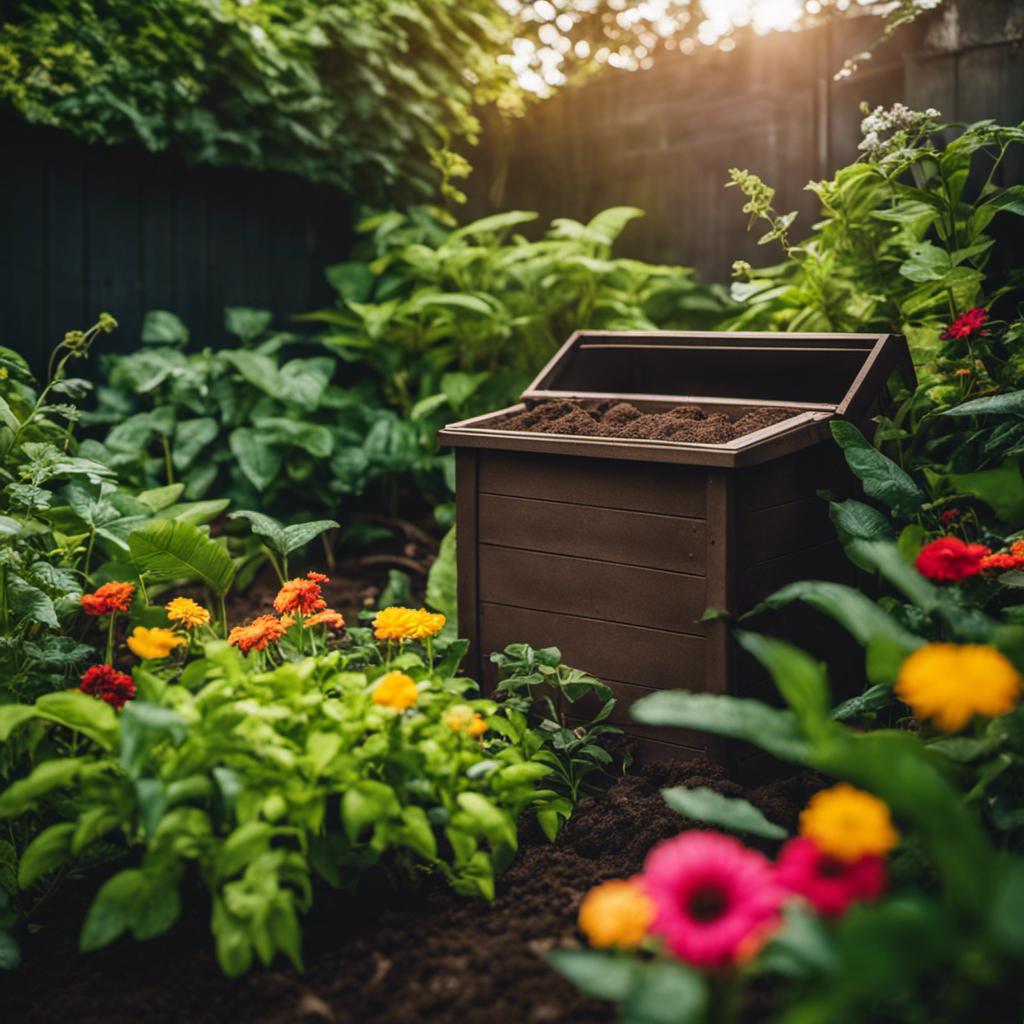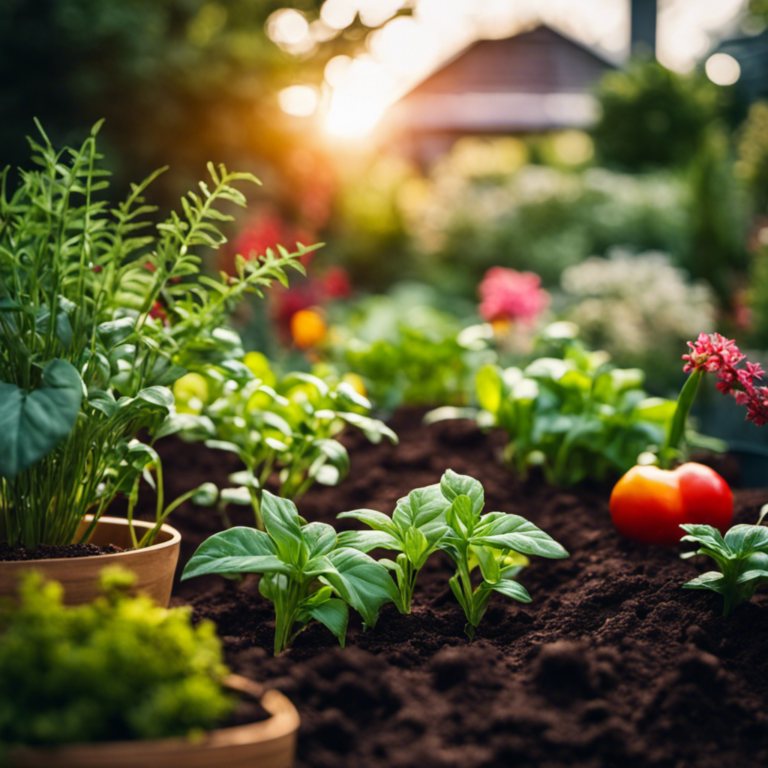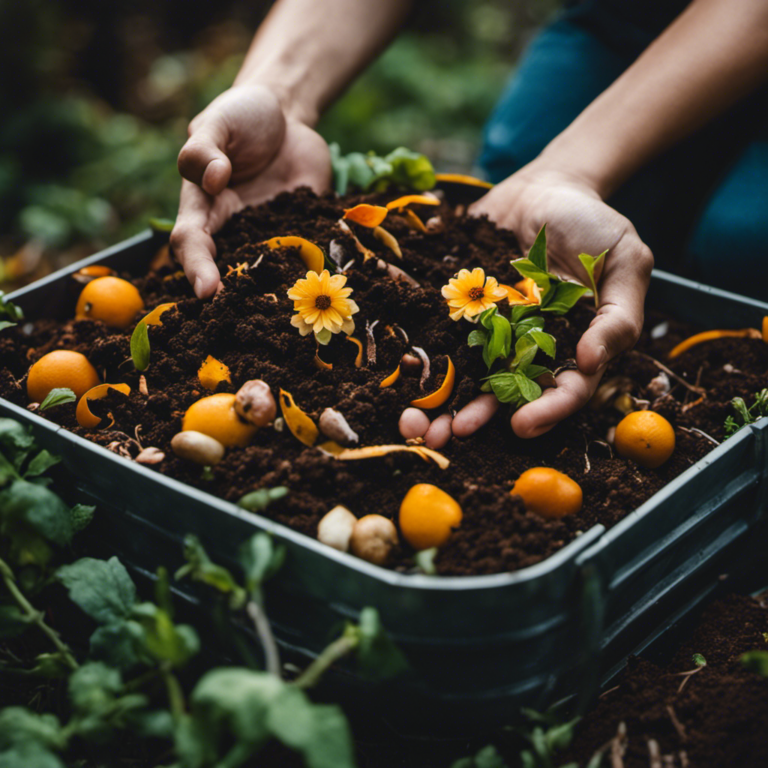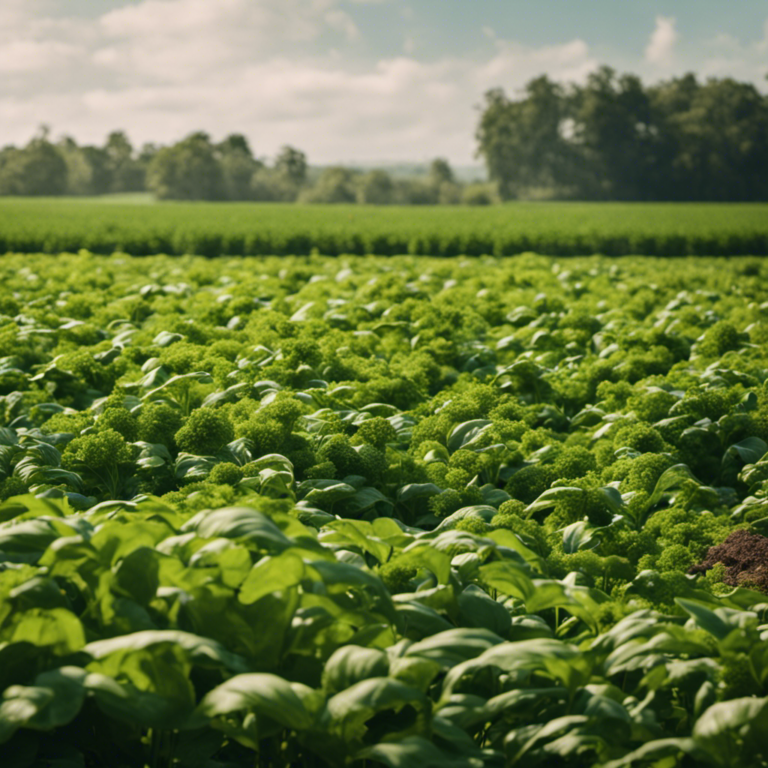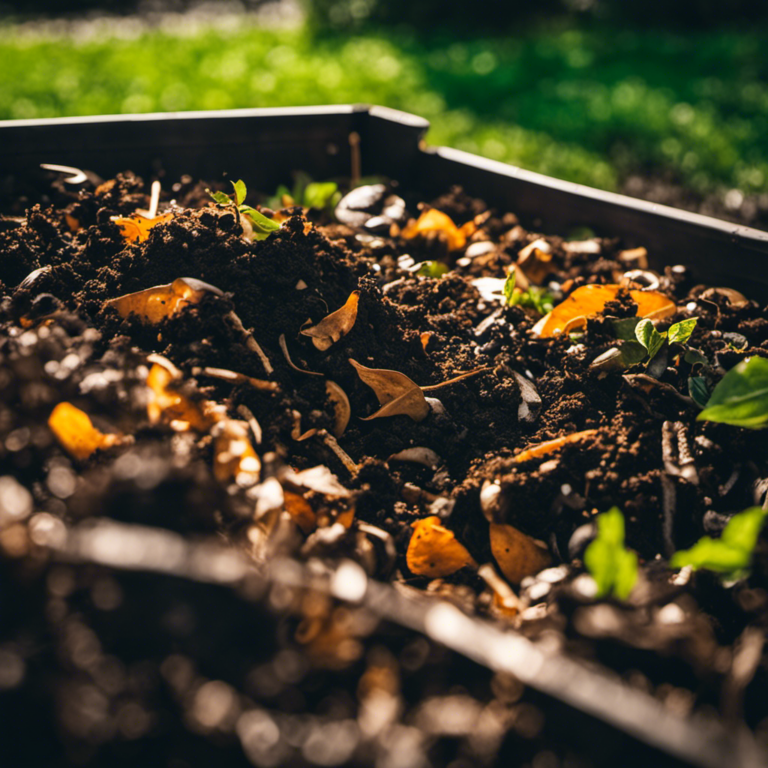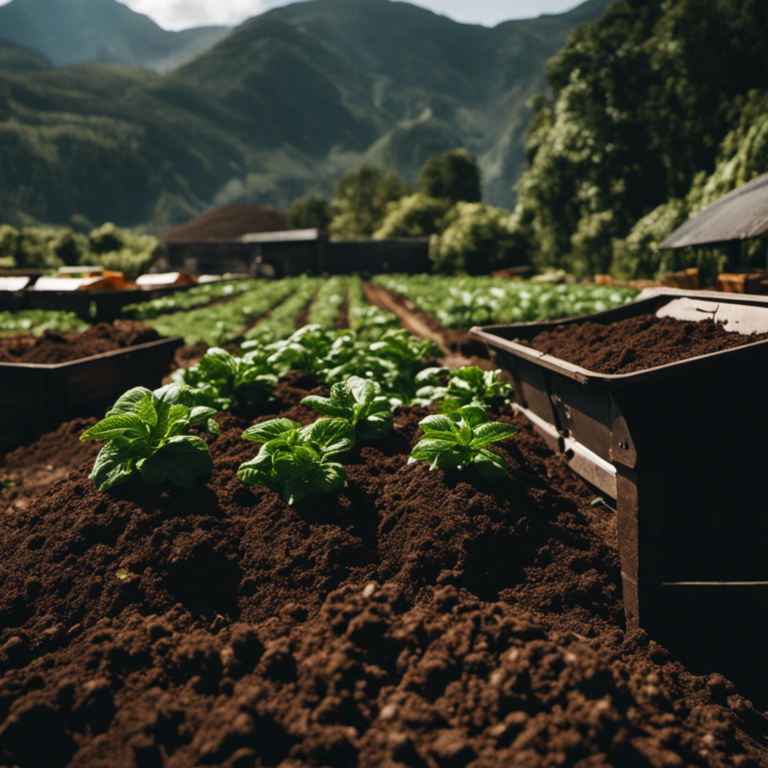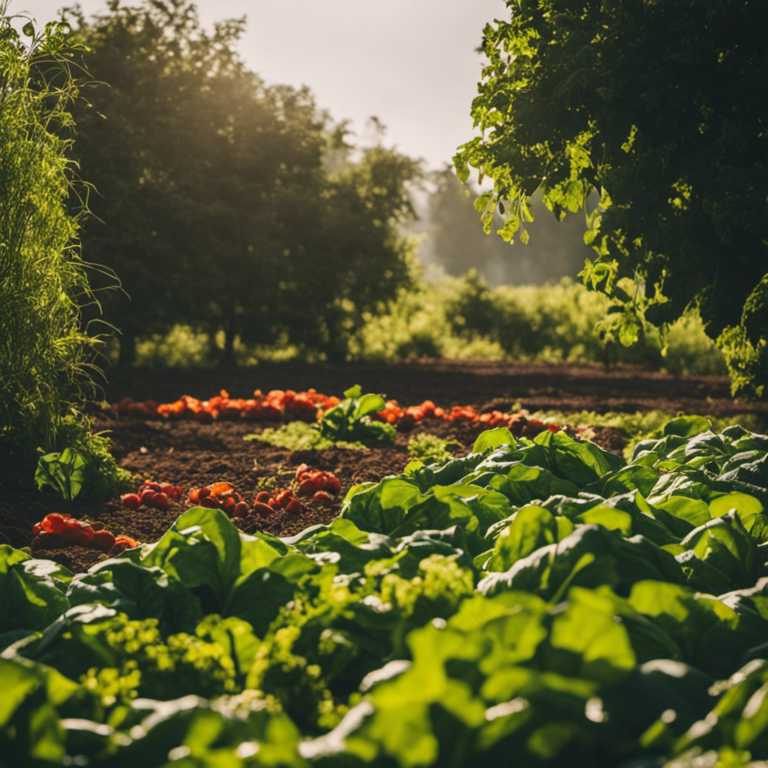As a gardener, I’ve always wanted to revitalize my garden. That’s why I’m excited to share with you a comprehensive guide to composting at home.
Get ready to transform your garden into a flourishing oasis with practical tips and techniques that are easy to implement.
From selecting the right compost bin to troubleshooting common issues, I’ll walk you through the process step by step.
Let’s get our hands dirty and make our gardens the talk of the neighborhood!
Key Takeaways
Transform Your Garden: The Home Composting Guide
Composting is an excellent tool for improving your garden. By using a compost bin and a little know-how, you can turn kitchen scraps and yard waste into nutrient-rich soil that will nourish your plants.
Efficient composting relies on layering techniques and managing moisture levels. Don’t worry if you face any challenges along the way, as troubleshooting is a normal part of the process.
Get ready to harness the power of composting and watch your garden thrive like never before!
Choosing the Right Compost Bin
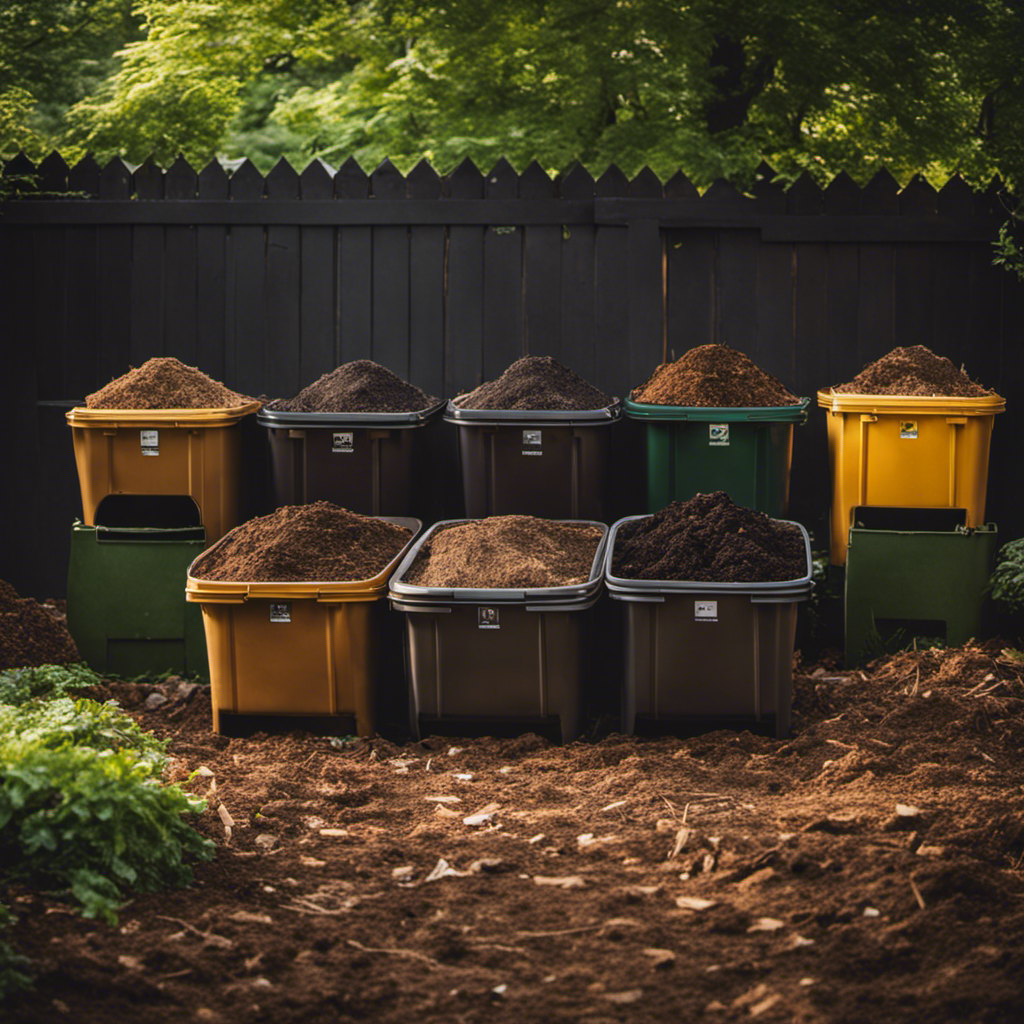
Choosing the Right Compost Bin
When selecting the appropriate compost bin, it’s important to consider the size and material options available. There are different types of compost bins to choose from, each with its own advantages and disadvantages.
One popular choice is the traditional compost bin, typically made of wood or plastic. These bins are sturdy, durable, and provide ample space for composting.
Another option is the tumbler compost bin, which is a barrel-shaped container that can be easily turned to mix the compost. This type of bin is ideal for those with limited space, as it takes up less room than a traditional bin.
Additionally, worm compost bins are also available, utilizing worms to break down organic materials. These bins are compact and can be kept indoors or outdoors.
When making a compost bin selection, it’s crucial to consider the amount of organic waste produced, the available space in your garden, and your personal preferences.
Essential Ingredients for Composting
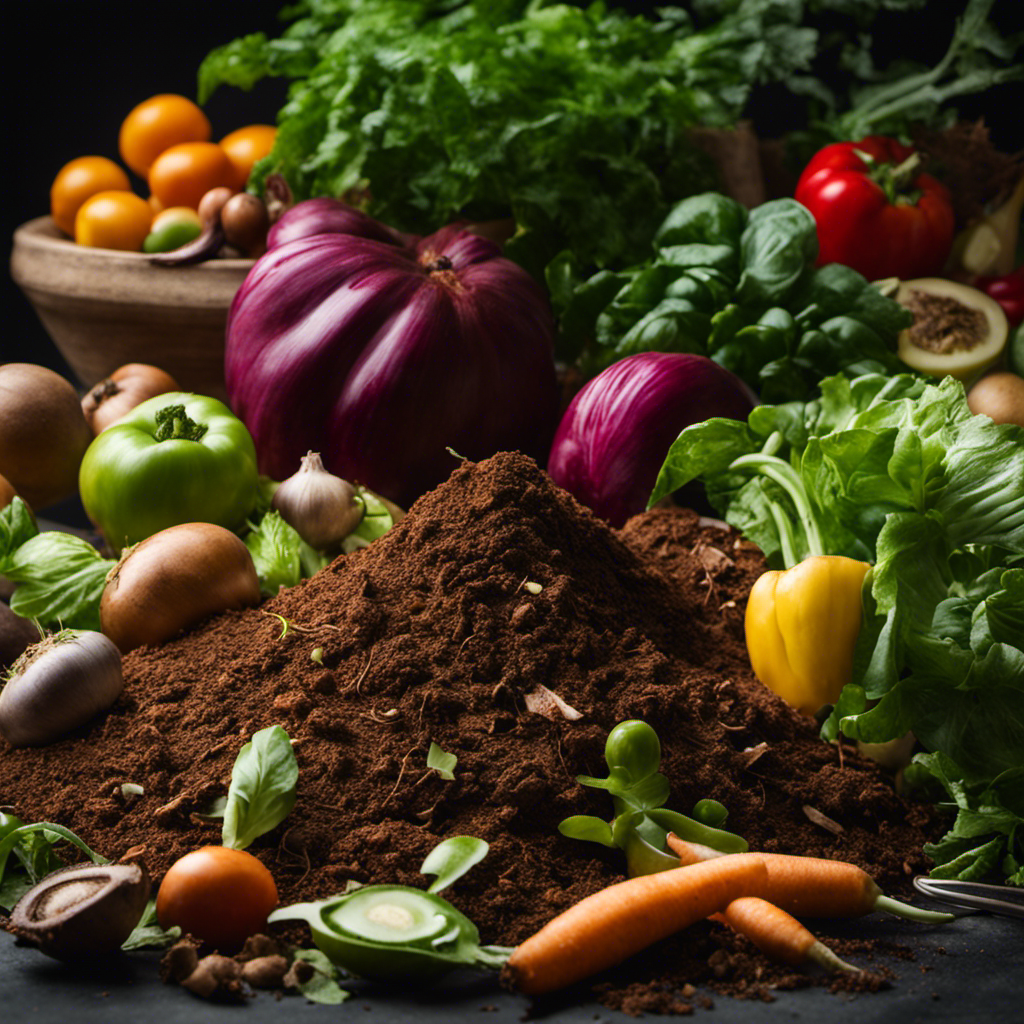
Composting at home is a simple and effective way to turn kitchen scraps and yard waste into nutrient-rich compost. This natural process breaks down organic materials and creates compost that can enhance the health and fertility of your garden soil. To ensure successful composting, it’s important to include the right ingredients in your compost pile.
Here are the essential components for composting:
-
Green Materials: These materials are rich in nitrogen, provide moisture, and aid in decomposition. Examples include fruit and vegetable scraps, coffee grounds, and grass clippings.
-
Brown Materials: These materials are high in carbon, add bulk to the compost, and improve aeration. Dry leaves, straw, and shredded newspaper are good examples of brown materials.
-
Water: Moisture is crucial for the composting process. Regularly moisten the pile to keep it damp, but not soggy.
-
Air: Oxygen is necessary for the decomposition of organic matter. Turning the compost pile regularly helps introduce air into the mix.
-
Microorganisms: These organisms break down the organic matter into compost. They’re naturally present in the materials being composted.
By combining these ingredients in the right proportions and maintaining the proper conditions, you can create a thriving compost pile. It’s essential to have a composting container that allows for proper aeration and drainage, such as a compost bin, tumbler, or designated area in your yard. Remember to layer the green and brown materials, keep the pile moist, and turn it regularly to ensure proper decomposition.
With these essential ingredients and the right composting process, you can transform your kitchen and yard waste into nutrient-rich compost that will nourish your garden and help it thrive.
Layering Techniques for Efficient Composting
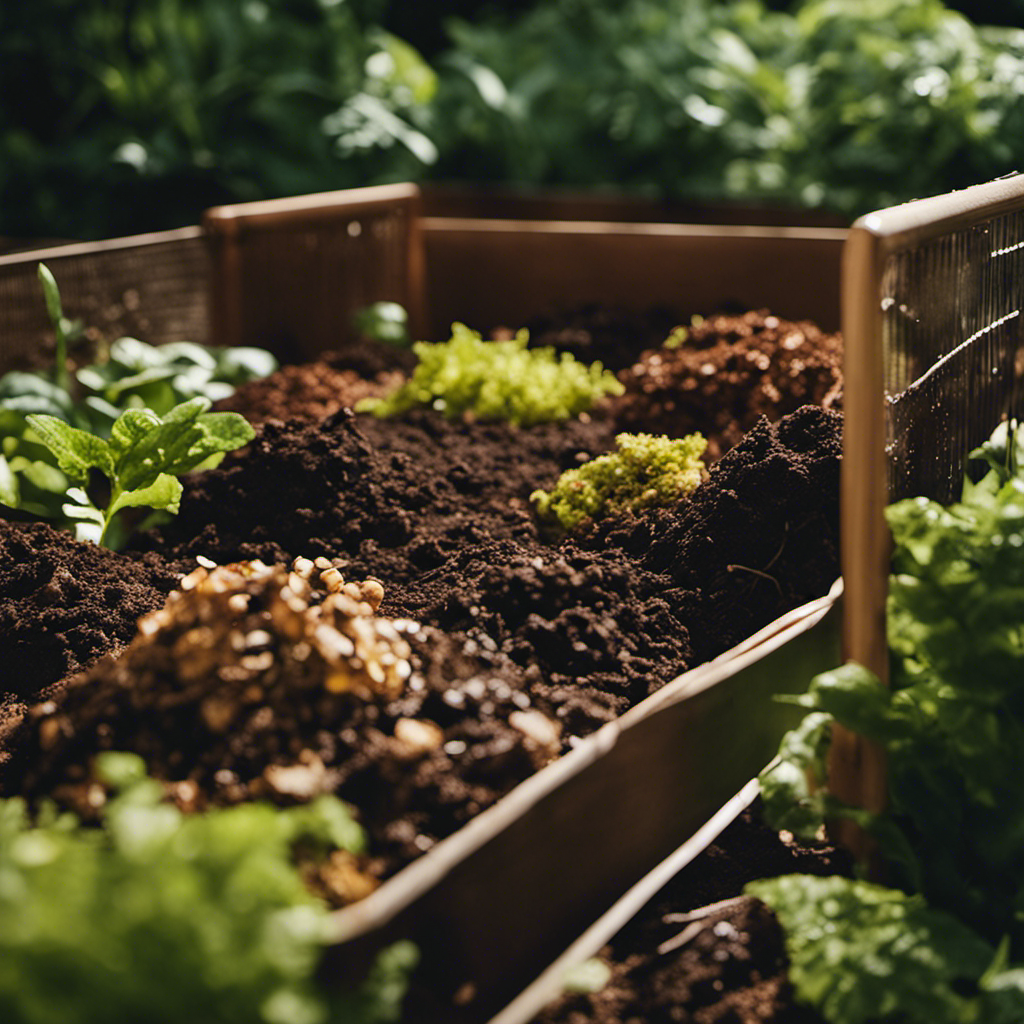
Efficient Layering Techniques for Composting at Home
To compost efficiently at home, I use a simple layering technique with green and brown materials in my compost pile. This technique creates optimal conditions for decomposition and ensures a balanced carbon nitrogen ratio, which is crucial for effective composting.
The carbon nitrogen ratio, also known as the C/N ratio, refers to the proportion of carbon-rich materials (browns) to nitrogen-rich materials (greens) in the compost pile. A balanced C/N ratio is approximately 30:1, providing the necessary nutrients for microorganisms responsible for breaking down organic matter.
When layering the materials, I start by placing a layer of browns, such as dried leaves or straw, at the base. This layer helps with aeration and prevents the pile from becoming too compacted.
On top of the browns, I add a layer of greens, such as fruit and vegetable scraps or grass clippings. The greens supply the necessary nitrogen for decomposition.
I continue alternating between browns and greens, layer by layer, until the pile reaches the desired height. Maintaining the proper balance of carbon and nitrogen throughout the composting process is important.
In addition to layering, I also pay attention to the frequency of turning the compost pile. Regular turning helps aerate the pile, providing oxygen for the decomposition process. Typically, I turn the pile every two to three weeks, ensuring that the materials mix well and decompose evenly.
Managing Moisture Levels in Your Compost

Managing Moisture Levels in Your Compost
As I continue to compost at home using efficient layering techniques, it’s important to also focus on managing moisture levels in my compost pile. Proper moisture management is crucial for preventing odors and maintaining the temperature in the compost pile.
To maintain the right moisture level in my compost, I regularly check the moisture content by squeezing a handful of the compost. It should feel like a damp sponge, not too wet or too dry. If it feels too dry, I sprinkle some water over the pile using a watering can or a hose with a gentle spray. On the other hand, if it feels too wet, I add dry materials like shredded newspaper or dry leaves to absorb the excess moisture.
Another way to manage moisture levels is by covering the compost pile with a tarp or a lid. This helps to prevent excessive moisture from rain or snow and keeps the pile from drying out under direct sunlight. Additionally, turning the compost pile regularly helps to mix the materials and distribute the moisture evenly.
Troubleshooting Common Composting Issues
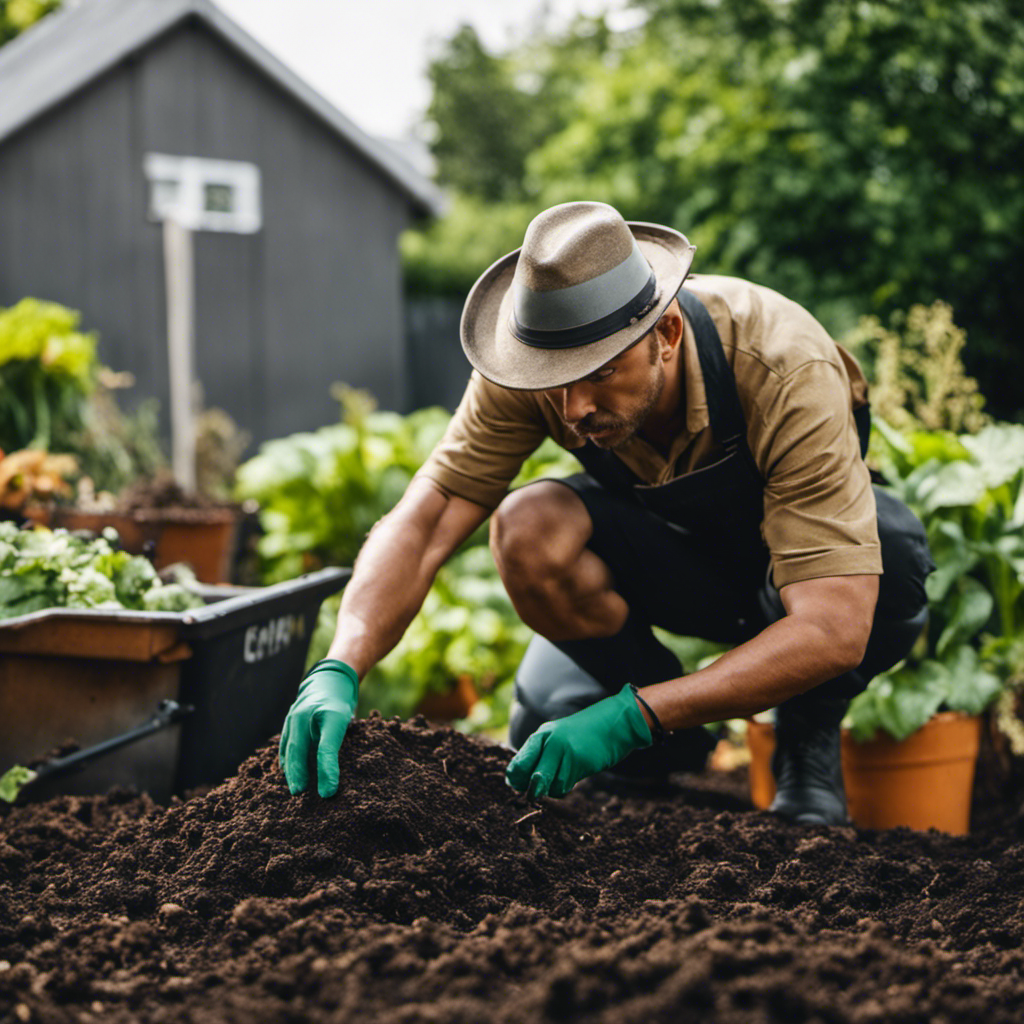
I faced several issues while managing moisture levels in my compost pile. One common problem was dealing with unpleasant odors coming from the compost. The main cause of odor problems in compost is usually an imbalance in the carbon-to-nitrogen ratio. To address this issue, I added more carbon-rich materials like dry leaves, straw, or shredded newspaper to the pile. This helped absorb excess moisture and reduce the odor.
Another issue I encountered was slow decomposition. This can be caused by factors such as insufficient aeration, a lack of nitrogen-rich materials, or the presence of large woody materials. To solve this problem, I regularly turned the compost pile to provide oxygen for the microorganisms responsible for decomposition. I also added nitrogen-rich materials like grass clippings or vegetable scraps to provide the necessary nutrients for faster decomposition. Additionally, I made sure to break down any large woody materials into smaller pieces before adding them to the compost.
Conclusion
Composting is a fantastic tool for transforming your garden. With a proper compost bin and a little knowledge, you can convert kitchen scraps and yard waste into nutrient-rich soil for your plants.
Efficient composting relies on layering techniques and managing moisture levels. Don’t worry if you encounter any challenges along the way, as troubleshooting is part of the process.
Get ready to harness the power of composting and witness your garden thrive like never before!
